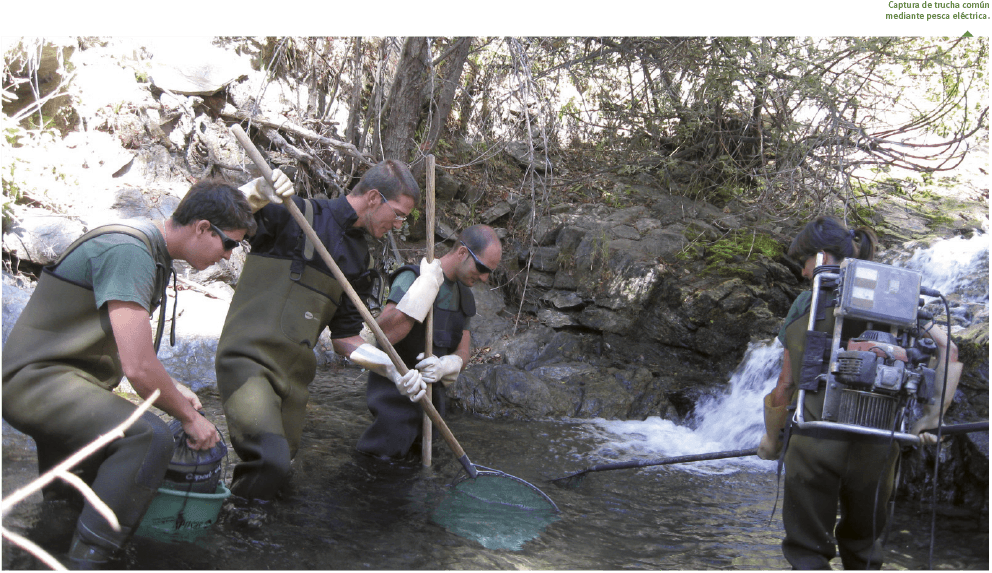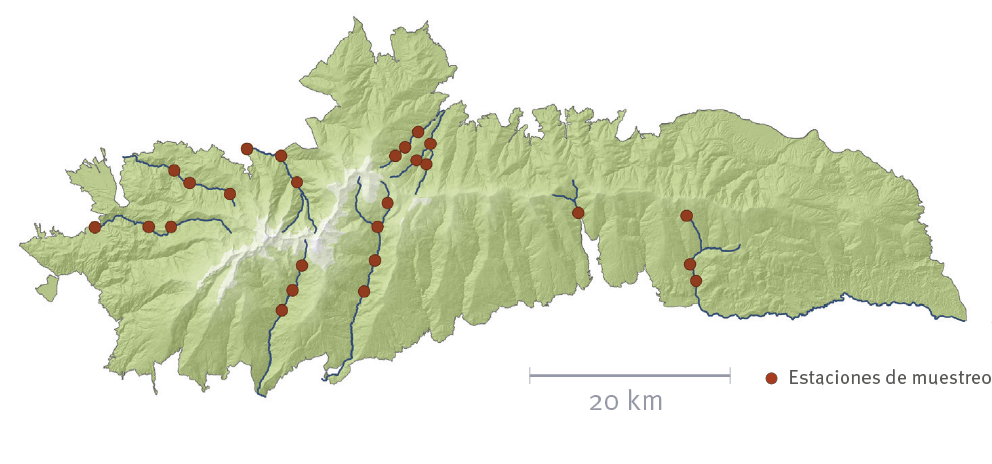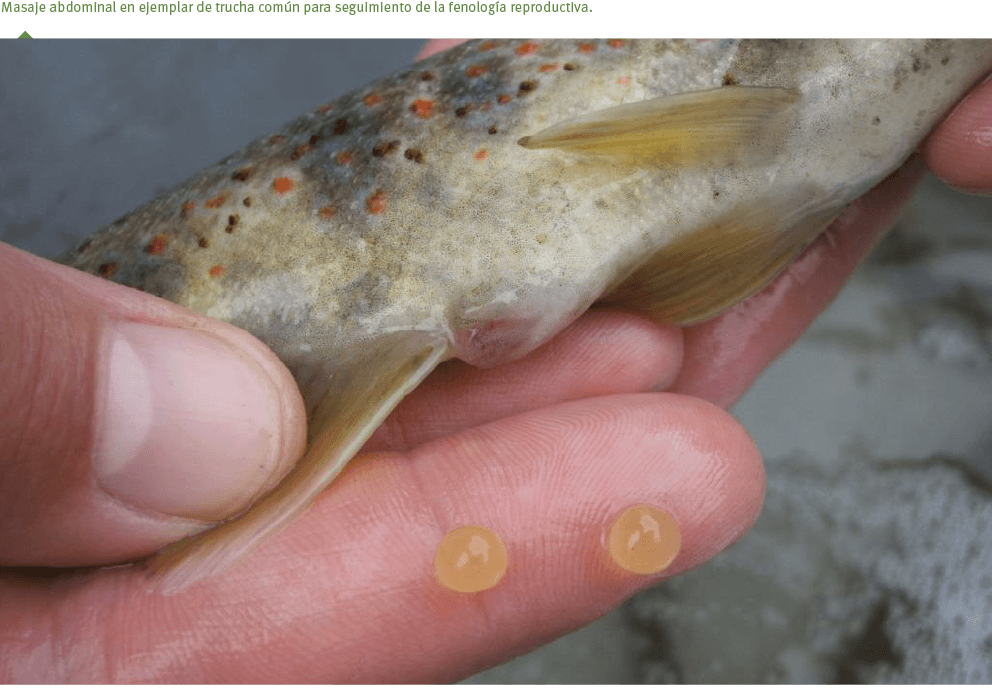
Aims
The aim of the monitoring of common trout (Salmo trutta) populations is to determine the influence of the environmental changes on the population structure, biomass-conversion efficiency, reproductive phenology, population limits, and disease prevalence in this salmonid. These variables are correlated with other ecosystem variables in order to infer effects attributable to climatic change.

Method and effort
For the study of the structure and biomass of the common trout, 7 rivers are studied using the method of successive captures with extraction by electric fishing on homogeneous surfaces. For the delineation of the populations, we firstly identify the known points with the presence of the species and we proceed to verify by electric fishing the presence of the species upstream in the case of the upper stretch and downstream in the lower one. For this, the river is sampled in 500-m stretches previously marked with nets, making a single pass in the entire stretch.
The reproductive phenology is monitored by abdominal massage of specimens captured in different periods of the year, noting the formation of eggs or sperm for each individual without making a significant extraction of reproductive material. For the determination of biomass-conversion efficiency, the age was determined by scales, to test the population structures proposed by mathematical models, thus gathering morphometric information on an annual basis.
Finally, periodic controls were made for pathologies to detect the incidence of emerging diseases that may be related to environmental changes.

Periodicity
The common trout populations are monitored annually.
References
García de Jalón, D., Mayo, M., Hervella, G., Barceló, E. y Fernández, T. 1993. Principios y técnicas de gestión de la pesca en aguas continentales. Ediciones Mundi-Prensa. Madrid, 247 pp.
Petersen, C.G.J. 1896. The yearly inmigration of young plaice into Linsfjord from the German sea. Rep. Dan. Biol. Stn., 6: 1-48.
Ricker, W.E. 1975. Computation and interpretation of biological statistics of fish populations. Bull. Fish. Res. Bd. Can., 191: 383.